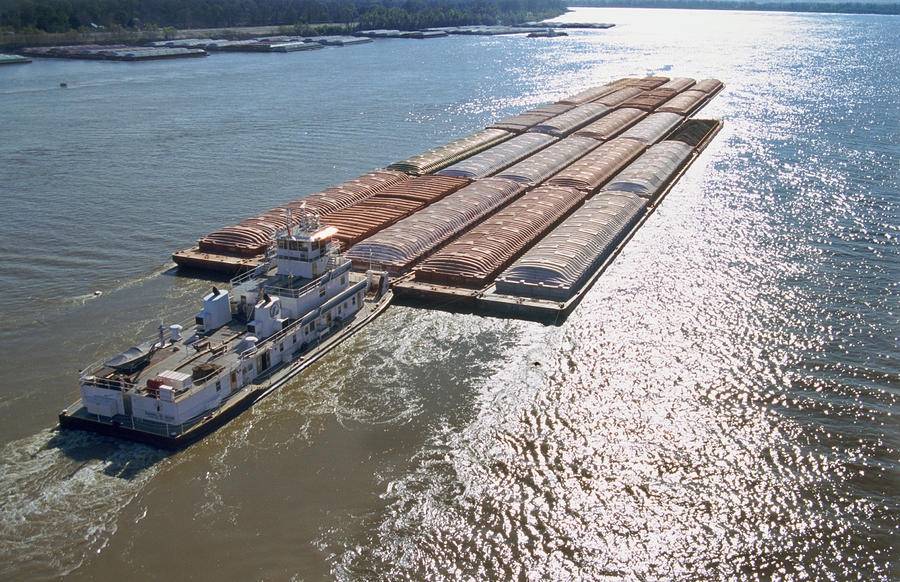Shipping and Logistics

Supply chain storm brewing as strike threatens East, Gulf Coast ports
Written by Laura Miller
September 24, 2024
A potential labor strike is threatening to disrupt supply chains up and down the Atlantic and Gulf Coasts beginning next week.
ILA-USMX contract negotiations – time is running out
Roughly 25,000 union dock workers at ports from Maine to Texas are preparing to strike on Tuesday, Oct. 1, at 12:01 a.m. That is if the International Longshoremen’s Association (ILA) and the United States Maritime Alliance (USMX) haven’t yet reached a new 6-year contract agreement.
“A sleeping giant is ready to roar on Tuesday, Oct. 1, 2024, if a new master contract agreement is not in place,” ILA President Harold J. Daggett said last week. “My members have been preparing for over a year for that possibility of a strike.”
Indeed, SMU reported on Daggett’s warning about the contract’s impending expiration and potential for a strike last November.
Recall that negotiations have been suspended since June after the ILA halted talks due to a dispute over the use of automation by USMX-represented employers at specific ports.
USMX claims to have made multiple attempts to resume bargaining with the ILA but says it hasn’t been able to schedule a meeting with the union.
“We remain prepared to bargain at any time, but both sides must come to the table if we are going to reach a deal, and there is no indication that the ILA is interested in negotiating at this time,” USMX said on Monday.
However, the ILA refuted that. Noting that the two sides have been communicating in recent weeks, it said the USMX has been engaging in “a misleading publicity campaign.”
While the union initially halted talks in June over disputes about automation, it said the stalemate in negotiations now is because USMX has offered “an unacceptable wage increase package.”
Despite knowing the bottom line needed for ILA members to ratify a new contract, Daggett said USMX is pushing “a low-ball wage package.”
USMX represents employers of the East and Gulf Coast longshore industry, including container carriers, marine terminal operators, and port associations.
It says that, since 1977, it has successfully negotiated 10 contracts with the ILA “without any coastwide disruptions to service.”
“Our goal remains the same: We want to bargain and avoid a strike, but time is running out if the ILA is unwilling to return to the table,” USMX said on Monday.
Possible impact of potential strike
While an ILA strike would primarily affect container-related trade and not so much breakbulk operations, it still has the potential for significant supply chain disruption.
International container shipper Maersk warned a strike would “have impacts on supply chains, leading to delays in cargo movement, increased costs, and logistical challenges for businesses relying on US East Coast and Gulf ports.”
“Longer strike durations may exacerbate disruptions, affecting import and export activities, container availability, and overall operational efficiency,” Maersk added.
Prepping underway
While the situation remains in flux, ports, terminal operators, and shipping carriers are closely monitoring the situation and taking measures to prepare for the likely strike.
For example, South Carolina Ports and other port operations have extended gate hours and increased staffing levels in preparation for a work stoppage.
Port Houston communicated that its container terminals would be closed in the event of a strike, but its general cargo/multipurpose facilities wouldn’t be affected.
Noting the potential for widespread service disruptions starting on Oct. 1, rail freight transporter CSX said, in anticipation of a strike, it “is making every effort to accommodate as much freight as possible in a fluid situation.”
Others, like Germany-based container transportation company Hapag-Lloyd, are encouraging customers to expedite import documentation and customs clearances and get cargo out of port terminals before Oct. 1.
Maersk is even prepping for an extended work stoppage: It plans to implement a “port disruption surcharge” effective Oct. 21 to cover the higher operational costs associated with a longer strike. The $1,500-3,780 surcharge would be for all cargo moving to and from East and Gulf Coast terminals.
Government intervention?
Last week, 69 members of Congress called on the Biden-Harris administration “to do everything in its power to prevent a work stoppage at East and Gulf Coast ports.”
A strike would lead to “dire impacts to our supply chains, our economy, and the American consumer,” they said.
However, Reuters reported on Sept. 17 that President Biden would not be using his presidential powers to stop the strike.
Meanwhile, USMX said it “has received outreach from the Department of Labor, the Federal Mediation & Conciliation Service (FMCS), and other federal agencies.”
Bonus black swan
If the looming, expansive strike was not enough, Gulf Coast ports face another potential black swan this week: Gathering strength in the Gulf of Mexico is Tropical Storm Helene, expected to reach hurricane status by the time it makes landfall in Florida this Thursday.
“Port Tampa Bay is working with the National Weather Service, US Coast Guard, and state and local partners to monitor the potential impact of the tropical system in the Gulf,” the port said on Monday.
“Gale force winds could impact our maritime operations within 48 hours,” it warned.

Laura Miller
Read more from Laura MillerLatest in Shipping and Logistics

Trump signs executive order aimed at making US shipbuilding ‘great again’
President Trump on Wednesday signed an executive order meant to breathe new life into American shipbuilding and curb Chinese dominance in the sector.

Great Lakes iron ore trade fell again in March
Recall that shipments also saw a sharp decline in January.

Longshoremen ratify contract with maritime alliance
Nearly 99% of ILA members voted in favor of a new labor deal with the United States Maritime Alliance that covers workers at ports on the Atlantic and Gulf coasts.

Reibus: Flatbed rates up slightly but uncertainty ahead
With construction seasonally soft, the flatbed market remains softer than the other main trailer types.

US-flagged ore shipments on Great Lakes down in 2024
The Lake Carriers’ Association reported a 4.5% y/y decline in December’s ore shipments of 4.6 million short tons.
